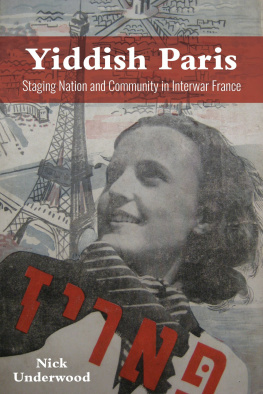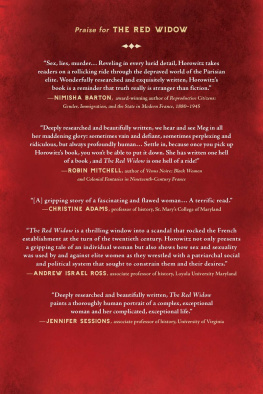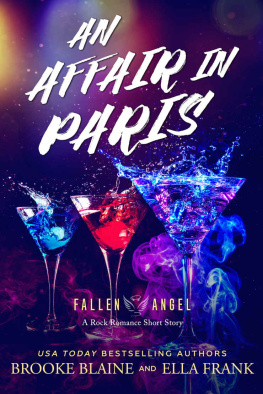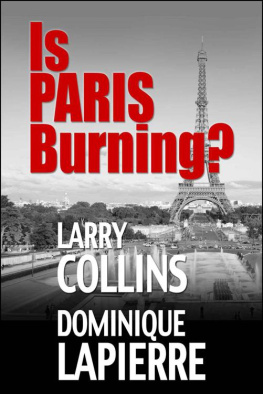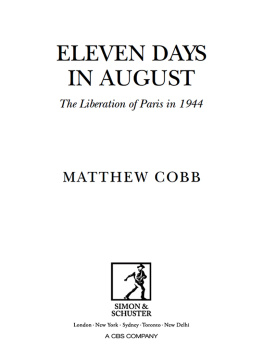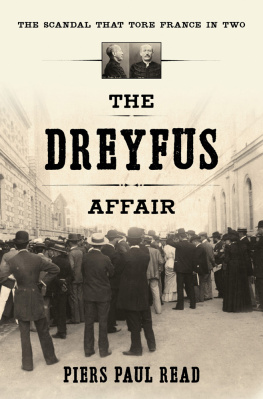
SIMPSON
IMPRINT IN HUMANITIES
The humanities endowment
by Sharon Hanley Simpson and
Barclay Simpson honors
MURIEL CARTER HANLEY
whose intellect and sensitivity
have enriched the many lives
that she has touched.
The publisher gratefully acknowledges the
generous support of the Simpson Humanities
Endowment Fund of the University of
California Press Foundation.
Violette Nozire
Violette Nozire

A STORY OF MURDER IN 1930S PARIS
Sarah Maza

University of California Press, one of the most distinguished
university presses in the United States, enriches lives around
the world by advancing scholarship in the humanities, social
sciences, and natural sciences. Its activities are supported by
the UC Press Foundation and by philanthropic contributions
from individuals and institutions. For more
information, visit www.ucpress.edu .
University of California Press
Berkeley and Los Angeles, California
University of California Press, Ltd.
London, England
2011 by The Regents of the University of California
Library of Congress Cataloging-in-Publication Data
Maza, Sarah C., 1953
Violette Nozire: a story of murder in 1930s Paris /
Sarah Maza.
p. cm.
Includes bibliographical references and index.
ISBN 978-0-520-26070-2 (cloth: alk. paper)
1. Nozire, Violette, 19151966. 2. Women murderersFranceParisBiography. 3. MurderFranceParisCase studies. 4. WomenFranceParisSocial conditions20th century. 5. Paris (France)Social conditions20th century. I. Title.
HV6248.N7M39 2011
364.1523092dc22 2010028603
Manufactured in the United States of America
20 19 18 17 16 15 14 13 12 11
10 9 8 7 6 5 4 3 2 1
This book is printed on Cascades Enviro 100, a 100% post
consumer waste, recycled, de-inked fiber. FSC recycled
certified and processed chlorine free. It is acid free,
Ecologo certified, and manufactured by BioGas energy.
FOR JULIETTE
CONTENTS
ILLUSTRATIONS
ACKNOWLEDGMENTS
Any merit to be found in this book must surely come from the two extraordinary places in which I had the good fortune to carry out the bulk of the work on it, Paris and Stanford. I completed most of the research during a yearlong sabbatical leave in France, for which I thank Northwestern University. As I was finding out about neighborhood life in the 1930s, Paris worked its magic and my family made lasting connections with people in our patch of the city, the quatorzime. For those Tuesday mornings in the caf on Rue Boulard and much else since, I thank Alain and Clotilde Policar, Hlne Teussard, Kirill Zaboroff, Jean Nirouet, and Olivier Basso. Working on the douzime has also strengthened long-standing ties to the friends through whom I first encountered the Picpus area of Paris, Barbara and Patrick Genevaz.
I was also lucky the day I walked into the Bibliothque des Littratures Policires in Paris. The library itself is a treasure, and its director, Catherine Chauchard, generously shared with me her extensive knowledge of French crime history. She has helped me at every turn in subsequent years. M. Yves Ozanam at the Bibliothque de lOrdre des Avocats went out of his way to track down biographical information on members of the legal profession for me. I am grateful to Mme Simone Mayeul for talking to me about her early years in the apartment next door to the Nozires, and to M. Philippe de Vsinne-Larue for sharing with me his memories of his cousin Ren.
As I began work on a project in a field, the twentieth century, to which I was new, I had to rely on the advice of friends much more knowledgeable than I. For crucial leads, ideas, and bibliographic advice, I thank Pierre Birnbaum, Carolyn Dean, Laura Lee Downs, Sarah Farmer, Nancy Green, Laura Hein, Gabrielle Houbre, Dominique Kalifa, Tessie Liu, Philip Nord, Mary-Louise Roberts, and Tyler Stovall. I was also lucky to have Brad Reicheks research assistance as I got started. Mi Gyung Kim provided helpful information on a crucial point of medical history. Jonathan Eburne gave me excellent leads as well as access to his work on Surrealism and crime when it was still unpublished, and Stephen Kern saved me from a number of mistakes by reviewing my chapter on the subject. Anne-Emmanuelle Demartini has been exceptionally generous in sharing with me from the start her own very fine work-in-progress on the Nozire case.
The book began to take shape thanks to support from the Alice Berline Kaplan Institute for the Humanities at Northwestern. I thank the institutes director, my longtime colleague and friend Holly Clayson, and Elzbieta Foeller-Pituch, then its assistant director, for helping me get the project off the ground. The bulk of the manuscript was written in the beautiful setting of the Center for Advanced Studies in the Behavioral Sciences in Stanford. The center more than lived up to its reputation as a utopia for scholars, thanks to Claude Steele, Anne Petersen, Linda Clark, and the congenial staff and fellows with whom I was privileged to spend a year. Mickey Dietler, Miles Kahler, Jessica Riskin, Vicki Schultz, and Fred Turner had their part in the years social and intellectual pleasures. I especially thank the gang of four historicist scholars with whom I shared weekly lunch discussions, Gail Herschatter, Julie Hochstrasser, Paula Findlen, and Katie Trumpener, for their warm support and acute readings of my early drafts. I received constructive criticism from audiences at presentations I gave at the Center for Advanced Studies as well as at Northwestern, Stanford, Berkeley, and Harvard. Longtime friends and colleagues in the North Carolina Triangle French History Group offered me especially pertinent reactions and advice during a session arranged by Lloyd Kramer.
My greatest thanks go to four readers of the penultimate draft of the manuscript: Carolyn Dean (again), Caroline Ford, and Ruth Harris reviewed the manuscript for the press and generously identified themselves, thereby giving the author occasion to importune them further with questions. My friend and colleague Ken Alder also read a full draft and gave me excellent suggestions and a crucial morale boost when my energy for the project was beginning to flag. Family helped out too: Jim LoScalzo performed editorial miracles with my inexpert photos (several of which originally included my feet), while Monica, Jonathan, and Suzy Maza reassured me that the book in progress was not unreadable. My thanks extend to my agent, Christy Fletcher, for excellent feedback as the book was taking shape and for shepherding it to a publisher. This project has allowed me to appreciate once again Sheila Levines outstanding qualities as an editor and friend; Kate Marshalls competence and patience have been a blessing in the books final stages, and it has been a pleasure to work once again with Rose Vekony.
Nobody has given me more confidence in the project and joy in carrying it out than Sean Shesgreen, who moved to France, learned French, cooked endless dinners, moved again, and heard the story of Violette Nozire many more times than anyone should have to. For all of this and his perceptive readings of my chapters, I am deeply in his debt. Our daughter Juliette responded with characteristic spirit, resilience, and wit when her life was twice upended in aid of her mothers research. She, if anyone, will appreciate the irony of being at thirteen the dedicatee of a book about a teenage parent-slayer.
Next page


